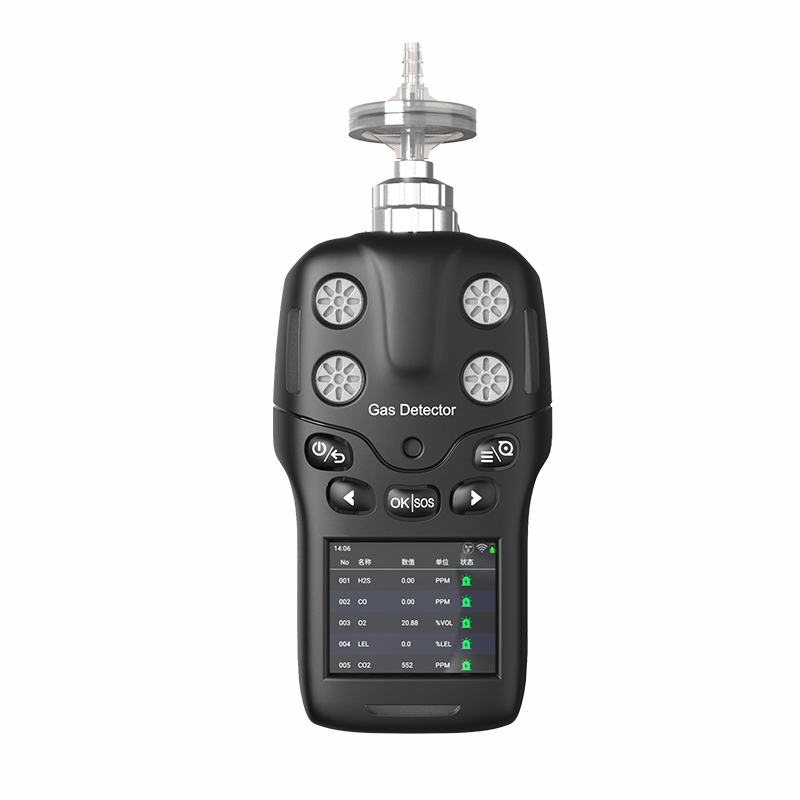- English
- Español
- Português
- русский
- Français
- 日本語
- Deutsch
- tiếng Việt
- Italiano
- Nederlands
- ภาษาไทย
- Polski
- 한국어
- Svenska
- magyar
- Malay
- বাংলা ভাষার
- Dansk
- Suomi
- हिन्दी
- Pilipino
- Türkçe
- Gaeilge
- العربية
- Indonesia
- Norsk
- تمل
- český
- ελληνικά
- український
- Javanese
- فارسی
- தமிழ்
- తెలుగు
- नेपाली
- Burmese
- български
- ລາວ
- Latine
- Қазақша
- Euskal
- Azərbaycan
- Slovenský jazyk
- Македонски
- Lietuvos
- Eesti Keel
- Română
- Slovenski
- मराठी
- Srpski језик
Industry Encyclopedia: Types of Toxic Gases That VOC Toxic Gas Detectors Can Detect
2025-09-23
In many scenarios, such as industrial production, interior decoration, and chemical experiments, the presence of toxic VOCs (VOCs) poses a hidden threat. They are often toxic, irritating, and even carcinogenic. If not detected promptly, they can have serious impacts on human health and environmental safety. VOC toxic gas detectors, as crucial tools for monitoring these gases, have attracted considerable attention for their ability to detect. Let's take a closer look at them with our editors from Zetron Technology.

The core function of a VOC toxic gas detector is to accurately detect volatile, toxic, and hazardous gases using specialized sensors (such as photoionization sensors (PIDs), catalytic combustion sensors, and electrochemical sensors). They cover a wide range of toxic gases, covering multiple industry scenarios, including the following categories:
I. Common Volatile Organic Toxic Gases
Benzene derivatives: Benzene, toluene, and xylene are commonly found in chemical products such as paints, coatings, and adhesives. They are highly carcinogenic, and long-term exposure can damage the human hematopoietic and nervous systems. Halogenated hydrocarbons: These include chloroform, carbon tetrachloride, and trichloroethylene. They are commonly found in dry cleaning, metal degreasing, and chemical production processes. They are severely toxic to organs such as the liver and kidneys, and some are also teratogenic and mutagenic.
Aldehydes and ketones: These include formaldehyde, acetaldehyde, and acetone. Formaldehyde is widely found in decoration materials and furniture, and can irritate the respiratory tract and skin, causing allergies and even cancer. Acetone is commonly used in solvents, and exposure to high concentrations can cause central nervous system depression.
II. Toxic Sulfur and Nitrogen Gases
Sulfur-containing gases: These include hydrogen sulfide (although not strictly a VOC, some combined VOC toxic gas detectors are compatible with it) and methyl mercaptan. Hydrogen sulfide is commonly found in wastewater treatment and oil production, and is highly toxic. Inhaling even small amounts can cause dizziness and nausea, while high concentrations can quickly lead to death. Methyl mercaptan, often derived from chemical production, has a foul odor and is a strong irritant to mucous membranes. Nitrogen-containing gases: such as aniline and pyridine. Aniline is used in dye and pharmaceutical production and can cause poisoning through skin absorption, leading to methemoglobinemia. Pyridine is an important chemical raw material and an irritant. Long-term exposure can damage liver and kidney function.
III. Other Volatile Toxic Gases
Esters and Ethers: such as ethyl acetate and diethyl ether. Ethyl acetate is commonly used in paints and ink solvents and is irritating to the eyes, nose, and throat. Diethyl ether was once used as an anesthetic, but high concentrations can depress the central nervous system and even cause respiratory paralysis.
Olefins and Alkynes: such as ethylene, propylene (some of which are toxic industrial gases), and acetylene. High concentrations of ethylene can cause impaired consciousness. Propylene is irritating to the eyes and respiratory tract, and long-term exposure may affect the digestive system.
It is important to note that different models of VOC toxic gas detectors can detect different gases due to differences in sensor type, detection principle, and configuration. Some portable detectors specialize in detecting specific VOC types, while multi-functional devices can cover multiple gases simultaneously. In actual use, it's important to select a VOC toxic gas detector model that matches the specific gas types used in your specific application scenario to ensure accurate and comprehensive detection.
In short, understanding the gas types a VOC toxic gas detector can detect will help you choose the right one based on your specific needs. Only by fully utilizing its capabilities can we promptly detect potential gas hazards and effectively safeguard our work and living environments.







